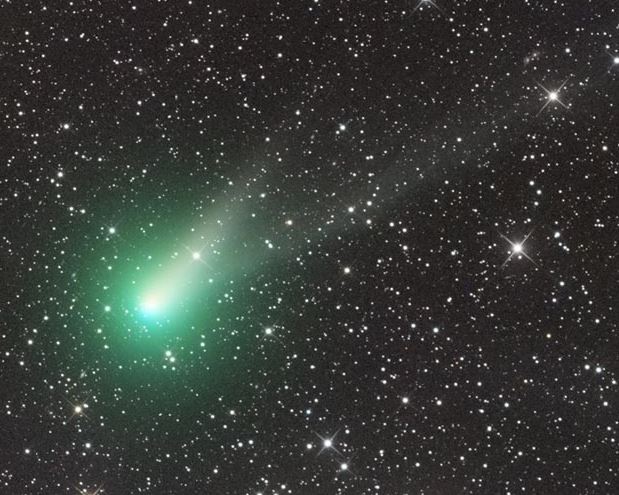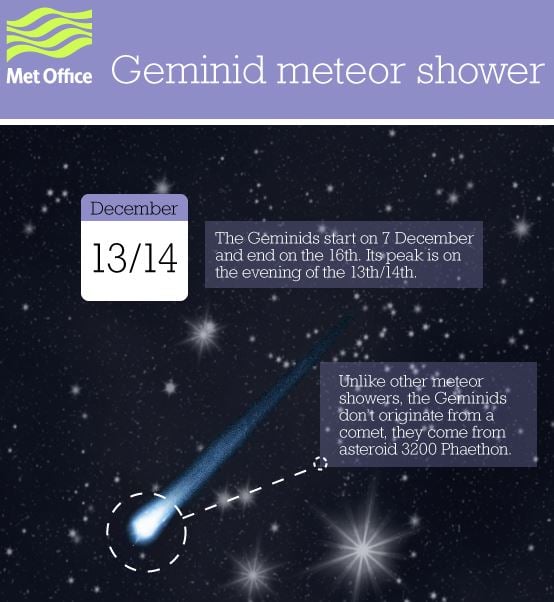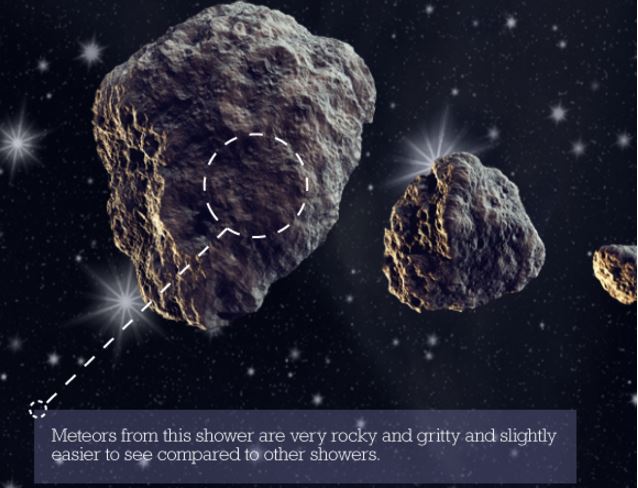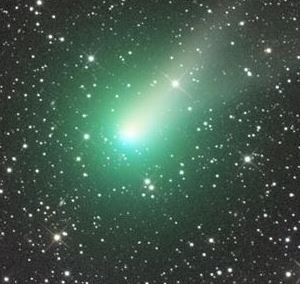Apart from comet Catalina and the annual Geminid Meteor shower, there is a lot to see in the sky over the next week. In fact, the December sky if full of fascinating celestial bodies to gaze at – all you need is a clear night and to look up.
According to Sky & Telescope, comet Catalina is running about a magnitude fainter than had been forecast, now that it is emerging into view low in the east during sunrise. According to Alan MacRobert, it’s on track to glow at 6th magnitude (not 5th) as it makes its climb higher into the predawn eastern sky through this month and January.
You should be able to see the comet easily using binoculars or a small telescope. During the early hours (before dawn) look within the constellation of Virgo. Last month, the comet made a quick turn around the sun and is rapidly approaching the Earth.
 According to NASA, comet Catalina (above) has resided primarily in the skies of the southern hemisphere. In December its highly inclined orbit will bring it quickly into the northern skies. (Image: apod.nasa.gov)
According to NASA, comet Catalina (above) has resided primarily in the skies of the southern hemisphere. In December its highly inclined orbit will bring it quickly into the northern skies. (Image: apod.nasa.gov)
Vinita Domier writes in The Davis Enterprise:
“Even though Catalina will not be very big and bright, it will be easy to locate as it approaches easily identifiable objects in the sky. In the early morning hours of Monday, Dec. 7, Catalina will be in close proximity to Venus and the waning crescent moon in the Virgo constellation. In the predawn sky of Jan. 1, Catalina will be in conjunction with the bright star Arcturus in the Bootes constellation.”
Comet Catalina (C/2013 US10) is an Oort cloud comet that was discovered on 31st October, 2013, by the Catalina Sky Survey. It is an icy chunk of dust, rock, frozen gases and water. It is believed to be a first-time visitor to the inner solar system, given that its orbital period was determined to be several million years.
Annual Geminid meteor shower
The annual Geminid meteor shower comes back next week as planet Earth passes through a trail of debris left by 3200 Phaethon, an asteroid.
 The Geminid meteor shower begins on December 7th and lasts until the 16th, peaking on the evening of 13th/14th. (Image: metoffice.gov.uk)
The Geminid meteor shower begins on December 7th and lasts until the 16th, peaking on the evening of 13th/14th. (Image: metoffice.gov.uk)
The Geminids are great, with up to 120 meteors streaking across every hour at their peak (says NASA, the UK Met Office says 50 per hour), the shower comes as regular as clockwork.
You don’t have to worry about finding the Gemini constellation to catch the show. Even though the meteors start off at the constellation, they will streak across the whole sky. All you will need are some warm clothes, hot drinks and a clear sky.
The UK Met Office says the peak of the Geminid meteor shower will occur over December 13th and 14th. You will be able to see more than 50 shooting stars per hour. “These are commonly bright and the shooting stars have long persisting trains.”
 Most celestial showers that we can see originate from a comet. Not the Geminid meteors – they come from an asteroid. They are very gritty and rocky, which makes them slightly easier to see than other showers. (Image: metoffice.gov.uk)
Most celestial showers that we can see originate from a comet. Not the Geminid meteors – they come from an asteroid. They are very gritty and rocky, which makes them slightly easier to see than other showers. (Image: metoffice.gov.uk)
NASA says that the Geminids this year will peak during daylight on December 14 across the United States, but you will still get some good meteor rates the night before and after, starting at 9 to 10 pm.
Met Office Video – The Geminid meteor shower

